
This trackman railway instrument, likely manufactured by Gfeller in 1963 (based on the date on the capacitor), was retested by Gfeller in 1969, possibly following an inspection. The Swiss Communications Museum has the same instrument in its collection, dating it to 1930. While this date might be possible, I suspect it's a mistake. My guess is that an instrument from the 1930s would more likely use wood or leather materials. The construction and components of my instrument, particularly the capacitor dated 1963 and the test label dated 1969, suggest it was manufactured in the 1950s or 1960s. Additionally, the RX/TX elements are dated 1986, indicating it was probably in use until the late 1980s or early 1990s. Update 2023-04-23: Acquired two more of these, both dated 1968 and 1969 based on capacitor and test label dates.
The instrument is designed for transport in a rucksack style (it weighs 12 kg!). Based on the station signals noted in the instrument, it was last used on the Sonceboz-Moutier Railway in the Swiss Jura region. Stations along the line and the portable instrument were called up using specific patterns of short and long rings.
The instrument has two railway telephone line sockets and includes a corresponding patch cable. The case is metal, and the body frame is made of lightweight alloy. In addition to the standard field phone components like a generator, ringer, coil, handset, and battery, it also includes connections for an external signal horn powered by an additional external battery. The signal horn is activated by a DC relay, triggered by rectified ringing current on the line.
Backpack straps. Connections for an external signal-horn.
Disassembled.

Back of the body, all parts but the ringer are mounted here.
On the front panel, top row, the pins 1/2 on the left correspond to La and Lb and connect to the ringer and line sockets in the case.
M/T are the handset connectors (Microphone and Telephone).
On the right the hookswitch which switches both, the transmitter and receiver circuits.
Below the hookswitch mechanism are the La and Lb sockets.
On the right of it the battery door opening.
Below that, hidden behind the capacitor and the rectifier, are the sockets for the external signal-horn and it's battery and the associated fuse.
On the bottom panel mounted are the generator, coil and capacitor from the main instrument circuit.
Additionally the rectifier and the relais for the external signal-horn.
On the right the battery holder which holds a single 1,5V D-type element.

Inside of the case.
On the right the connectors 1/2 corresponding to La and Lb to connect to the main body.
In the middle the 2x 1750ohm ringer.
On the right the two parallel line sockets.
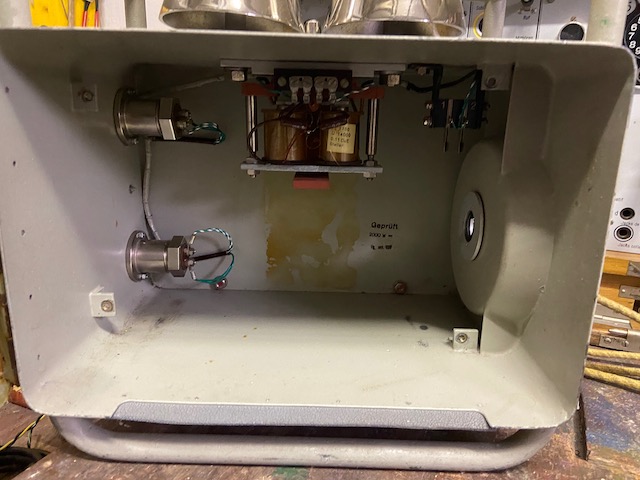
The body mounted inside the case.
Left of the hook the closed battery door.
Below the hook mechanism are the La and Lb sockets.
And below that the sockets for the external signal-horn and it's battery and the associated fuse.
The ground socket is connected to the body.
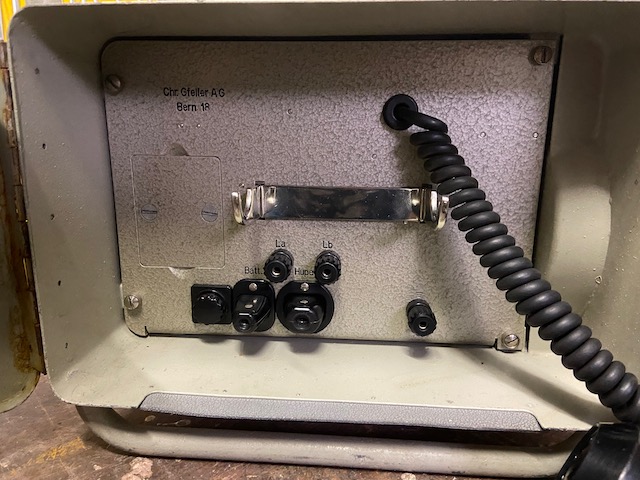
With the handset on hook. This is a standard Swiss PTT type 1946 handset.
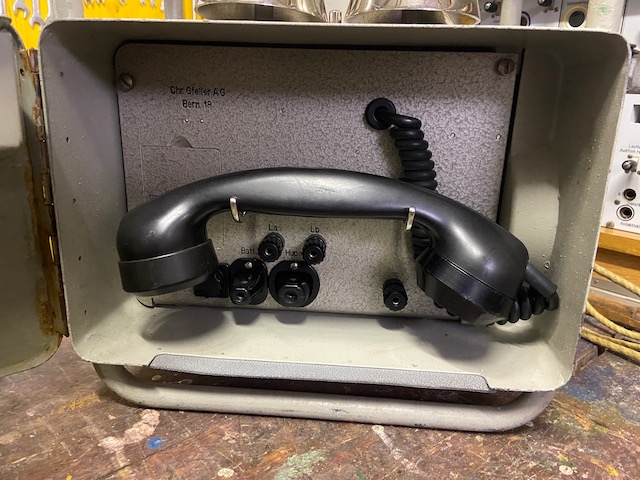
The TX and RX elements mounted are of standard Swiss PTT type 1946 size.
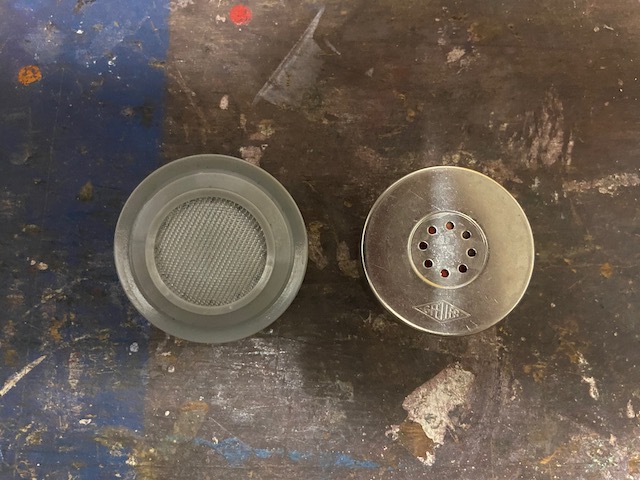
TX and RX elements back. The TX element is a Philips dynamic element for LB from 1986.
The 95ohm RX element is from Gfeller, also with date 1986.

Inside the front door a box to transport the patchcord with special railways connectors is mounted.
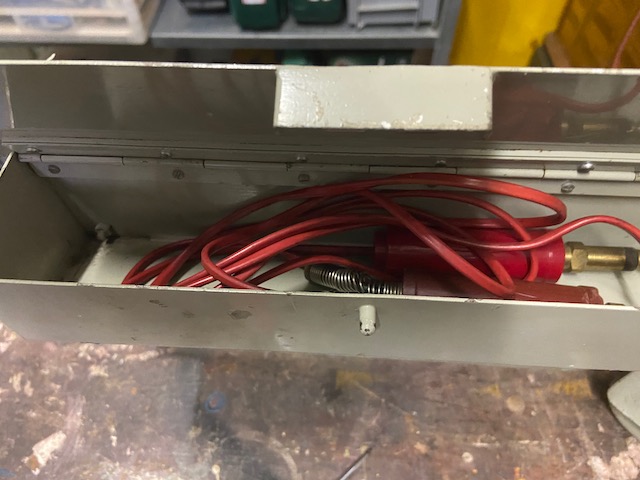
The patchcable connected.
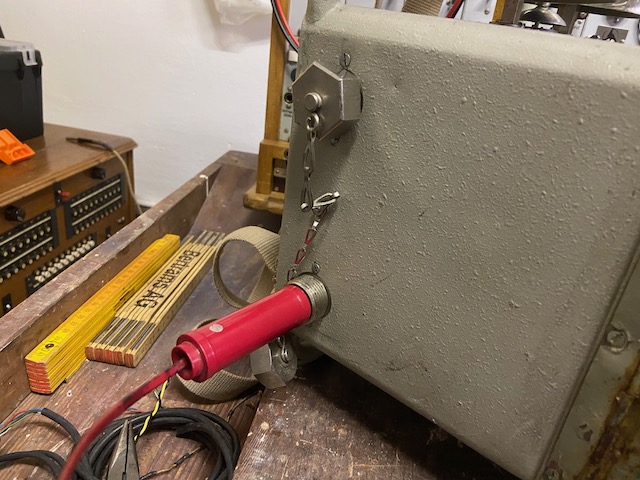
On top of the patchcable box the manually written indications of the station call codes. The stations are: Sonceboz, Bienne, Reuchenette, Tavannes, Reconvillier, Court, Moutier, Cortébert.
I assume Poste S is the instrument itself.
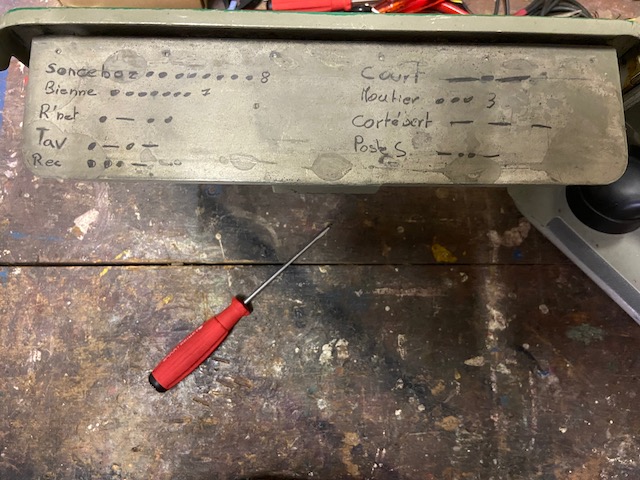
Ready for transport.
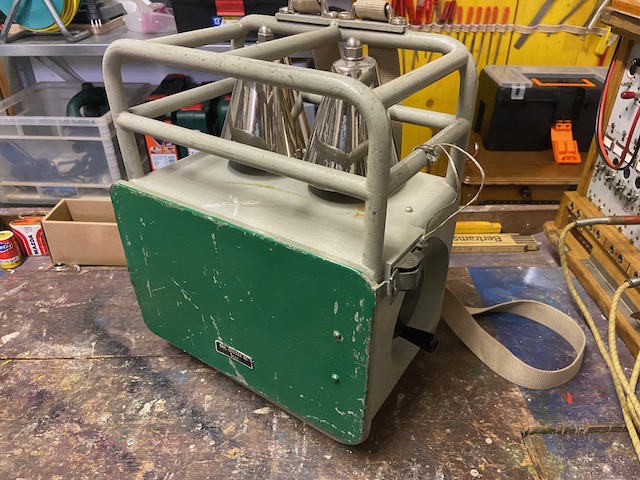
Backpack straps. 12kg on the back!
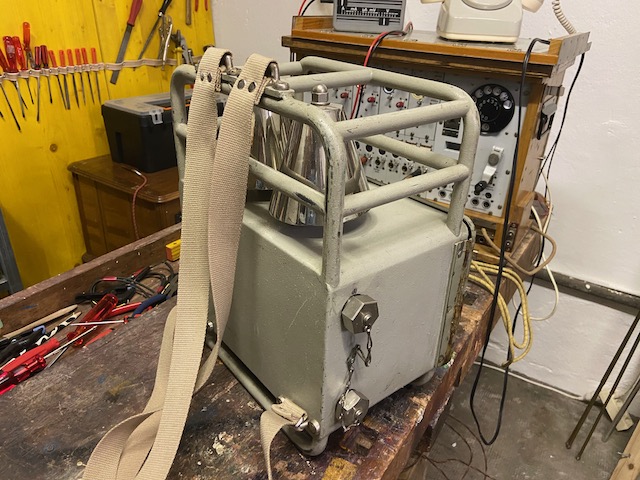
Exploded. Disassembled for thorough cleaning when I first got it.
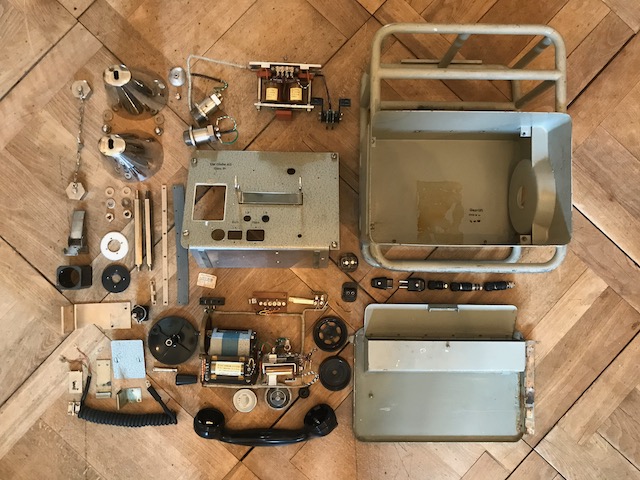
Electrical diagram (self made).
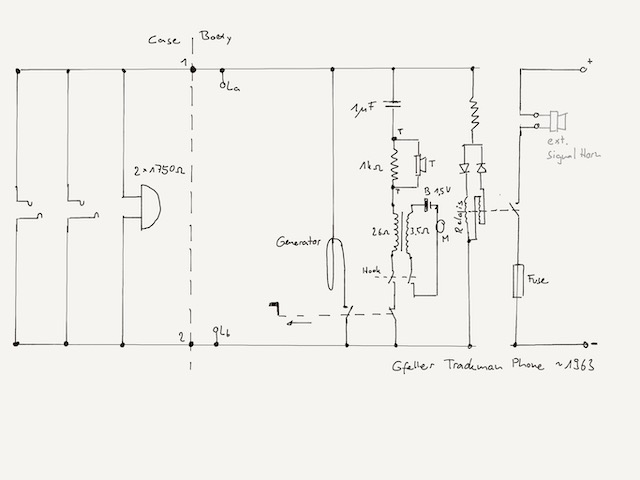
Update 20230423: Electrical diagram from another identical instrument (Made 1969, diagram glued into back of case).
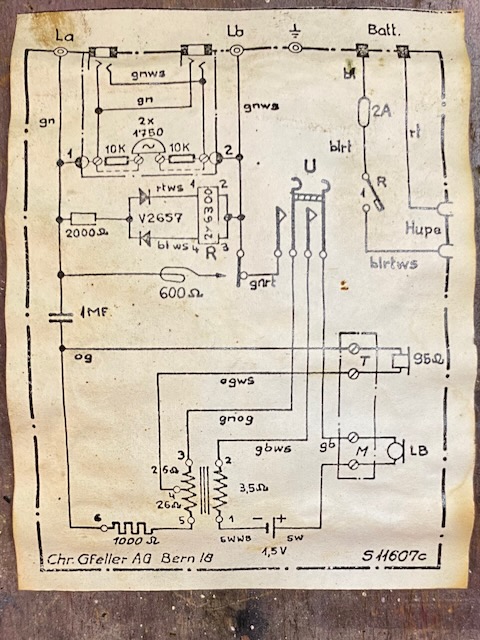
Creative Commons Attribution-ShareAlike 4.0 International License